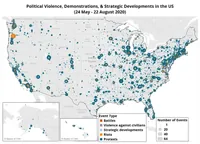China's Export Surge Sparks Global South Concerns and Strategic Dilemma
China's pledge to open its economy contrasts with rising protectionism, causing alarm in emerging markets. Beijing faces a strategic challenge balancing domestic growth with global south relations.

Xi Jinping's recent pledge to open China's economy to emerging nations has highlighted a growing dilemma for Beijing. As the world's second-largest economy shifts towards advanced manufacturing, concerns are rising about the potential flood of cheap Chinese goods into developing markets.
On September 5, 2023, at the China-Africa summit in Beijing, Xi promised to introduce zero tariffs for the least developed countries. This move contrasts sharply with the United States' drift towards protectionism, abandoning its role as a champion of free trade.
China's economic strategy, dubbed "new quality productive forces," aims to redirect investment from real estate and infrastructure to advanced manufacturing. This shift has prompted accusations from Western nations of excessive production and dumping surplus goods abroad.
"Chinese goods are so cheap that no amount of tariff can reduce their price competitiveness."
The scale of China's export surge is significant. In August 2023, exports reached $309 billion, the highest monthly level in two years. This growth spans a wide range of products, from electric vehicles to green technologies and traditional manufacturing inputs.
Emerging markets are responding with protective measures:
- Indonesia: Import duties of up to 200% on textiles and other goods
- Chile: Anti-dumping tariffs on Chinese steel
- Thailand: Establishment of a new body to examine restrictions on Chinese imports
- India: Implementation of anti-dumping measures and ongoing probes

These actions mark a significant shift in the relationship between China and the global south. Historically, China has been viewed as an essential economic partner, providing investment through initiatives like the Belt and Road Initiative (BRI), launched in 2013.
The current situation echoes the "China Shock" of the 1990s when China first flooded world markets with cheap goods after joining the World Trade Organization in 2001. However, the current "China Shock 2.0" is more complex due to China's advanced manufacturing capabilities and the global economic landscape.
Trade-dependent economies in Asia face particular challenges. Countries like Malaysia and Thailand rely on Chinese goods for their factories but are now vulnerable as China expands into higher-end manufacturing. This situation risks hollowing out the region's manufacturing base and exacerbating issues of premature deindustrialization, a concept introduced by economist Dani Rodrik in 2015.
For China, this presents a strategic dilemma. Beijing must balance its domestic economic imperatives with its role as a leader in the global south. The export-driven growth model, a cornerstone of China's economic success since becoming the world's largest exporter in 2009, is now causing friction with developing nations.
As Western nations consider this an opportunity to build a common agenda with the global south, China faces a difficult choice. It must decide whether to prioritize its export-based growth model or maintain its leadership role among developing nations. Balancing these competing interests will be crucial for China's future economic and geopolitical strategy.


































